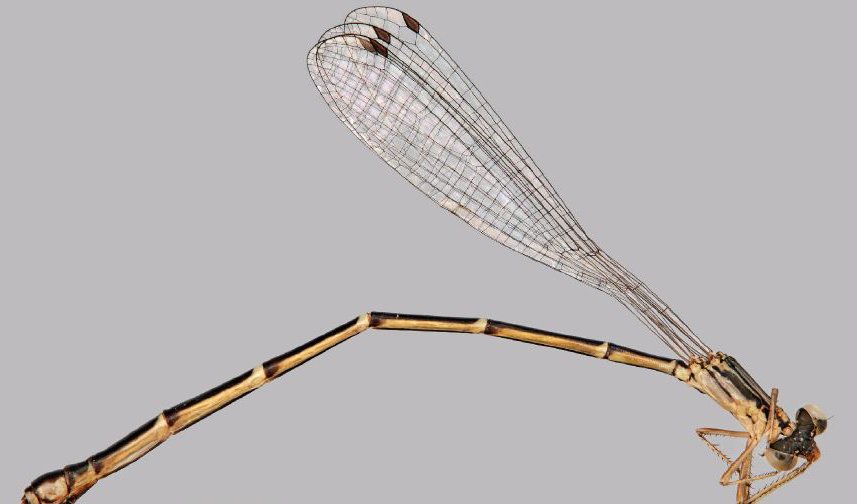New species of damselfly discovered in Queensland

A NEW SPECIES of damselfly has been discovered in Spring Creek on Bonny Glen Station, north-east Queensland by a group of scientists from the Queensland Museum.
The damselfly—Oristicta rosendaleorum, was discovered during a ‘Bush Blitz’ expedition, which is a field project focussed on identifying new species of flora and fauna in Australia.
According to Chris Burwell, an entomologist at the Queensland Museum, who discovered the tiny creature, it’s the first new species of damselfly to be discovered in over 10 years.
The lucky find came about while Chris and another Bush Blitz participant, Remko Leijis were searching for stygifauna— the invertebrates associated with ground water, in Bonny Glen.
“In the end Remko had no success at the mud spring, but we stopped for lunch at Spring Creek. I quickly scoffed my lunch and went collecting dragonflies and damselflies along the creek. I caught quite a few species and when I returned to the Bush Blitz lab for a closer look I realised that some of specimens I collected didn’t seem to match any named species.”
Chris says that the Oristicta rosendaleorum is about 4cm long and has a long, thin, mostly dark-coloured abdomen with a pale tip in the male.
The new species is named after Indigenous Elder Uncle Eric Rosendale and his daughter Barbara, which Chris told Australian Geographic is in recognition of their generosity.
“We decided to name it after the Rosendale family specifically for Uncle Eric and his daughter Barb because we first found it on their property and Eric took us to the spot, and because both Eric and Barb generously donated their time to the Bush Blitz survey, showing us around their country, and helping us out in the field.”
At present, very little is known about the species beyond its appearance and its habitat.
“On the Quinkan Bush Blitz trip we collected just five specimens of the new species from a couple of creeks within about 20 km of the town of Lakeland,” Chris says. “I first collected specimens on Spring Creek on Bonny Glen Station where they seemed to be associated with rocky pools with lots of algae which is perhaps where their nymphs live. But that’s about the limit of what we know so far.”
READ MORE:
- The dragonflies and damselflies of Australia.
- Opinion: Conservation efforts must include small animals.

